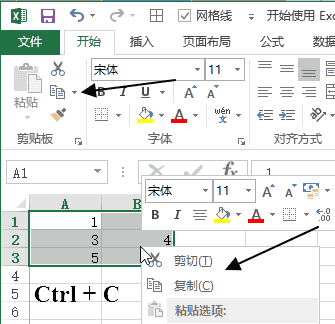iOS 缓存分析之 cache_t
2023-11-13 01:36:59
深入探究 iOS 缓存机制:了解 cache_t 结构
缓存是 iOS 开发中的关键机制,用于存储常用数据,以提升应用程序的性能和响应能力。cache_t 结构是 iOS 中用于管理缓存的核心数据结构。深入理解其作用、内存布局以及缓存机制的实现,将使开发者能够优化应用程序的内存使用和性能。
cache_t 结构的职责
cache_t 结构负责管理缓存,其主要职责包括:
- 存储缓存元数据,如缓存大小、元素数量和命中率。
- 维护缓存中元素的列表。
- 提供访问和修改缓存中元素的接口。
cache_t 结构的内存布局
cache_t 结构在内存中占用 64 个字节,其布局如下:
struct cache_t {
uint32_t _flags;
uint32_t _capacity;
uint32_t _num_elements;
uint32_t _hash_count;
uint32_t *_buckets;
struct cache_item_t *_items;
};
- _flags :用于指示缓存状态和配置的 32 位标志字段。
- _capacity :表示缓存容量(最大元素数量)的 32 位无符号整数。
- _num_elements :表示缓存中当前元素数量的 32 位无符号整数。
- _hash_count :表示哈希桶数量的 32 位无符号整数。
- _buckets :指向哈希桶数组的 32 位无符号整数指针。
- _items :指向缓存项数组的缓存项结构指针。
哈希表实现
cache_t 结构使用哈希表来存储缓存元素。哈希表由哈希桶数组组成,每个桶都存储指向链表的指针,链表中包含缓存元素。
哈希函数用于将每个元素映射到哈希桶。查找或插入元素时,使用哈希函数计算元素哈希值,然后根据哈希值确定要使用的哈希桶。
插入和查找元素
插入缓存元素时,计算其哈希值并使用该值确定要使用的哈希桶。如果哈希桶中已有相同哈希值的元素,则用新元素替换旧元素。否则,将新元素添加到哈希桶中。
查找缓存元素时,使用与插入时相同的哈希函数计算其哈希值。然后,使用该哈希值确定要使用的哈希桶,并在哈希桶的链表中查找具有匹配哈希值的元素。
缓存淘汰策略
当缓存达到其容量时,需要一种策略来确定哪些元素应从缓存中删除以腾出空间给新元素。iOS 使用最近最少使用 (LRU) 淘汰策略,即删除最近最少使用的元素。
LRU 策略通过在每个缓存项中维护时间戳来实现。时间戳表示元素上次被访问的时间。删除元素时,找到具有最早时间戳的元素并将其从缓存中删除。
代码示例
以下代码示例演示了如何使用 cache_t 结构创建和管理缓存:
#include <stdlib.h>
#include <stdio.h>
struct cache_t *cache_create(uint32_t capacity) {
struct cache_t *cache = malloc(sizeof(struct cache_t));
cache->_flags = 0;
cache->_capacity = capacity;
cache->_num_elements = 0;
cache->_hash_count = 1024;
cache->_buckets = malloc(sizeof(uint32_t) * cache->_hash_count);
cache->_items = malloc(sizeof(struct cache_item_t) * cache->_capacity);
return cache;
}
void cache_insert(struct cache_t *cache, uint32_t key, void *value) {
// 计算哈希值并确定哈希桶
uint32_t hash = hash_function(key);
uint32_t bucket = hash % cache->_hash_count;
// 在哈希桶中查找匹配的元素
struct cache_item_t *item = cache->_buckets[bucket];
while (item != NULL) {
if (item->key == key) {
// 找到匹配元素,更新其值
item->value = value;
return;
}
item = item->next;
}
// 未找到匹配元素,创建一个新元素
item = malloc(sizeof(struct cache_item_t));
item->key = key;
item->value = value;
item->next = cache->_buckets[bucket];
cache->_buckets[bucket] = item;
// 更新缓存元数据
cache->_num_elements++;
}
void *cache_lookup(struct cache_t *cache, uint32_t key) {
// 计算哈希值并确定哈希桶
uint32_t hash = hash_function(key);
uint32_t bucket = hash % cache->_hash_count;
// 在哈希桶中查找匹配的元素
struct cache_item_t *item = cache->_buckets[bucket];
while (item != NULL) {
if (item->key == key) {
// 找到匹配元素,返回其值
return item->value;
}
item = item->next;
}
// 未找到匹配元素,返回 NULL
return NULL;
}
void cache_destroy(struct cache_t *cache) {
// 释放哈希桶和缓存项
free(cache->_buckets);
free(cache->_items);
// 释放缓存本身
free(cache);
}
结论
cache_t 结构是 iOS 缓存机制的核心组件。通过理解其职责、内存布局和缓存机制的实现,开发者可以优化应用程序的内存使用和性能,从而编写出更高效、更响应的 iOS 应用程序。
常见问题解答
-
cache_t 结构的大小是多少?
cache_t 结构在内存中占用 64 个字节。 -
如何创建和初始化一个 cache_t 结构?
可以使用 cache_create() 函数来创建和初始化一个 cache_t 结构。 -
如何向缓存中插入或查找元素?
可以使用 cache_insert() 和 cache_lookup() 函数分别向缓存中插入或查找元素。 -
iOS 使用什么缓存淘汰策略?
iOS 使用 LRU(最近最少使用)缓存淘汰策略。 -
如何释放 cache_t 结构?
可以使用 cache_destroy() 函数来释放 cache_t 结构。



